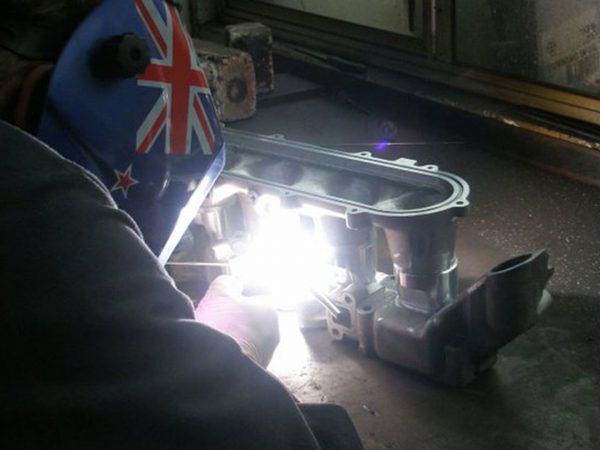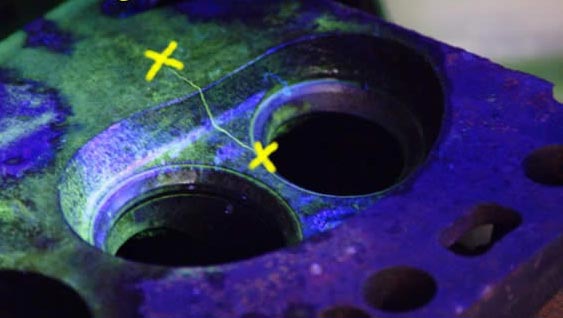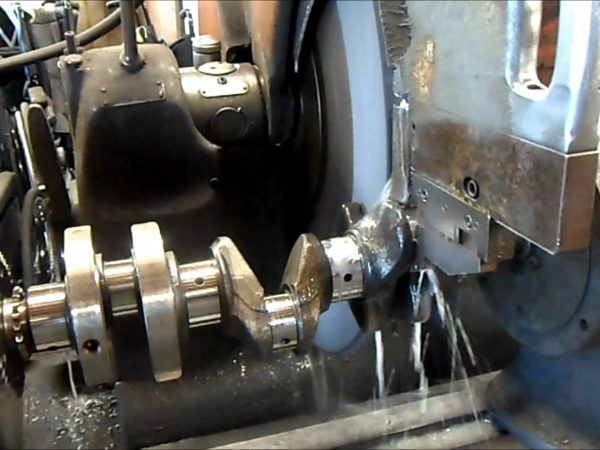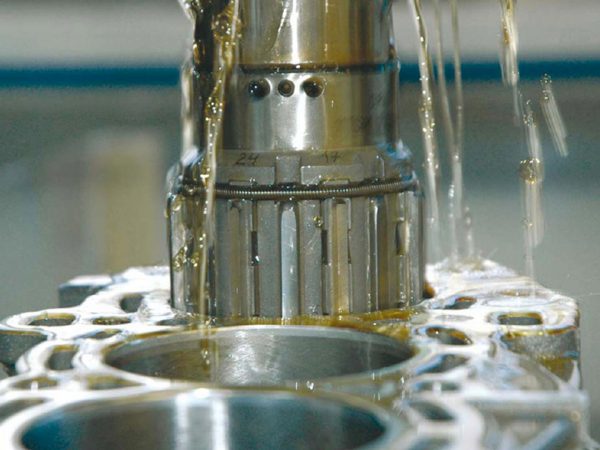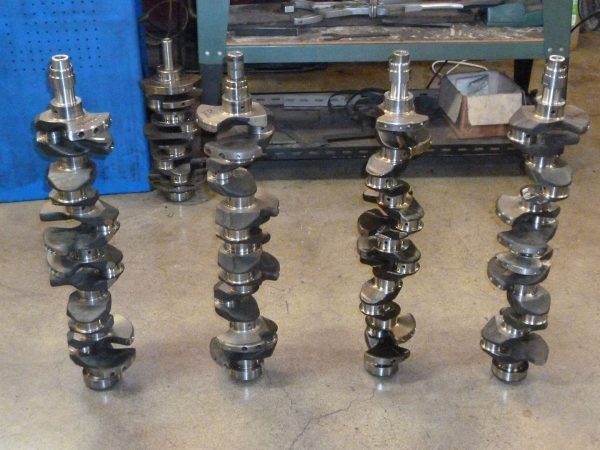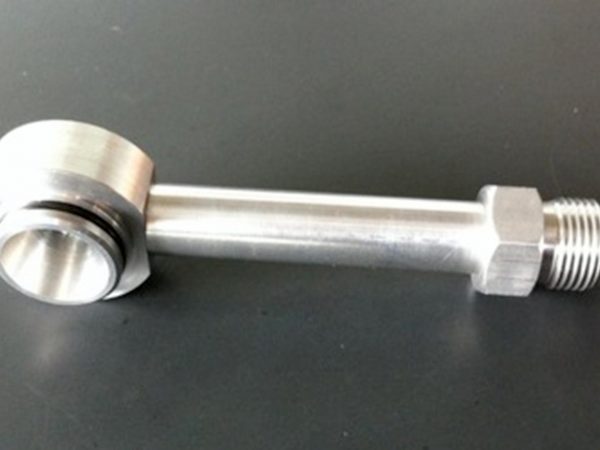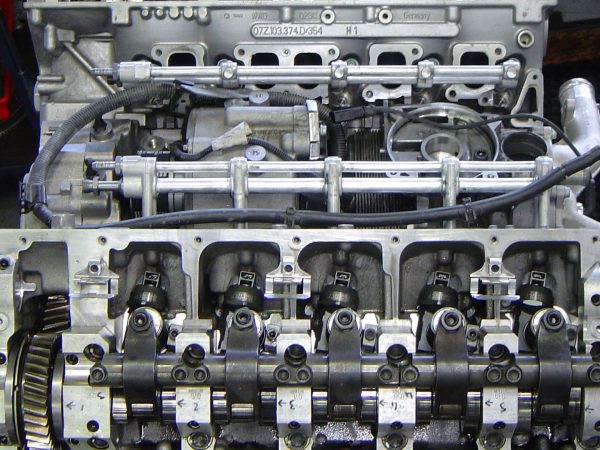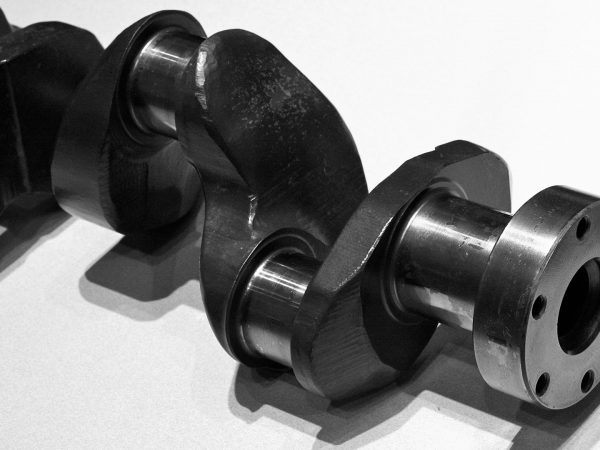Engine Services
Crack Testing & Repairs
If there is a suspected crack in a cylinder head, it is sometimes possible to repair these and we have many different techniques that can work. First identifying the crack (cast iron) we use a magnetic particle penetrant under a special fluorescent light to establish if the repair is viable. If so then there are several different ways to rectify including welding. Aluminum crack testing is achieved with dye penetrant system or in the case of cylinder heads and oil coolers pressure testing.
Pressure Testing
If you have a suspected crack or overheating problem we can replicate the conditions of an engine and test your cylinder head to see if this is where the fault is, in doing so eliminating any fittings or frost plugs in the process. This is done by testing the internal cooling system of the cylinder head by pressurizing it beyond the capabilities of the conventional cooling system.
Crank Grinding
Not a lot of engine reconditioners have a crank grinding machine due to the outright expense of obtaining one, experience using them and the running costs. Car Aid are proud to be one of the lucky ones and when it comes to precision engine reconditioning you can be rest assured that if a crank shaft needs to be ground that when possible we will always mount and measure the internal diameter of the bearings in their set position and the bearings will stay in this location. Once bearings are mounted and measured, we then calculate the optimum clearance and grind the shaft to the specific size to ensure correct clearances. We also custom stroke crankshafts to achieve greater displacement, a lot of calculations are involved in this process so is more suited to our high output, high budget, performance engines.
Cylinder Honing
We carry a large selection of hone stones which in conjuction with Penrite honing oil allow us to achieve the best possible results for your engine.Today’s engines require different bore surface finishes to vintage engines. We have the experience and the techniques to achieve optimum efficiency in every aspect of honing from straightening bores and deglazing to plateau honing to achieve the best surface finish possible. We also specialize in torque plate honing which is essential in some engines to replicate the stresses put on an engine block after installing the cylinder head. This allows us to have confidence that our bores will be perfectly round, thereby maximizing almost instantaneous ring seal during the bedding in process.
RB Crankshafts
Here we have a selection of RB crankshafts machined and ready to have their Custom 4340 oil pump collars fitted. These collars are thicker than a lot of cheaper ones available in the market today.
Head Drain Vent
Over the years we have made many developments on the track which can be used in everyday applications. The most commonly used modifications apply to modern day Japanese engines such as the RB and SR engines, but that is not to say that you can’t use them in your Toyota or Subaru. Once you start modifying your engine, you start to find weaknesses in the original manufacturers design such as the ventilation of the crank case on all RB series engines. We rectify this by adding additional venting points (i.e. fitting in rear cylinder head drain/vent, correct catch can plumbing). Due to the restriction of space behind the engine we have developed this design. Head Drain/VentDesigned to fit into the rear frost plug location of the cylinder head this utilizes an AN-10 fitting and then drains/vents back into a similar fitting above the oil level in the top of the sump. These are available at Car-Aid on request $P.O.A.
Chemical Cleaning
With oil splashing around inside an engine and with the addition of heat, engines build up a carbon deposit which can slow down/restrict the internal oil flow.There are many different ways to clean an engine but the best way is chemical cleaning. At Car-Aid we use a hot alkaline based bath to soak cast iron in for a specific period of time then use an air assisted water gun to blast away any residue and remaining dirt. Alloys require their own specific cleaning process and for this we have a cold acid based bath, after soaking the parts we blast them off and then all parts from both tanks go into a giant dishwasher where these are once again cleaned, before they are passed inspection.
Nissan RB Oil Pump Drive
A common problem with most performance Nissan RB engines is the oil pump drive. Originally Nissan built their crankshafts with a small drive on the snout, and the inner oil pump gear only contacting on a fraction of this drive. Over the years we have developed our own style of replacement drive machined from a billet piece of 4340 (high tensile) steel. Machined in a precision lathe, we tend to leave our drive slightly oversize, so that once fitted to the crankshaft we can set it up and grind it to its final size guaranteeing concentrically. Nissan RB Oil Pump DriveAt Car-Aid the process begins by setting your crankshaft up in the crank grinder and grinding the original oil pump drive off. We believe this to be better than the practice of doing it in a lathe as once ground the surface on the crank is smoother and ensures full contact allowing better heat transfer on the replacement drive and thus eliminates any chance of the drive slipping and also guarantees perfect alignment between the oil pump drive and the front main journal. These are available from Car-Aid on request $P.O.A
Crankshaft Stroking
A very brief overview of the process involved in stroking a crankshaft to obtain a larger capacity engine without changing the overall external dimensions of an engine. A process where the internal cubic capacity (CC) of an engine is increased or decreased without any changes to its external physical size. Over boring an engine will slightly increase the cubic capacity (CC) of an engine but can sometimes be detrimental to the longevity of the engines life. Boring is the process of taking material out of the cylinder walls to a specified size to fit oversized pistons. This is a good way of getting rid of bore wear or any trauma the bores may have sustained, but in doing so will lessen the wall thickness of the cylinder bores making them slightly thinner. With factors like core shift and boost added into the equation, this can lead to a short term, good time. Stroking a crankshaft is another way of increasing the internal CC’s but with far greater gains. This is achieved by increasing the stroke or throw of a crankshaft pin, while decreasing the size of the big-end journal and essentially moving the centreline. You can either buy an aftermarket stroker kit or put together a combination that will suit your particular application. When setting up to grind big-end journals on a crankshaft, we offset the journal to the factory stroke, and the journal will grind round within a few thou (thouandths of an inch) dependant on wear and other


